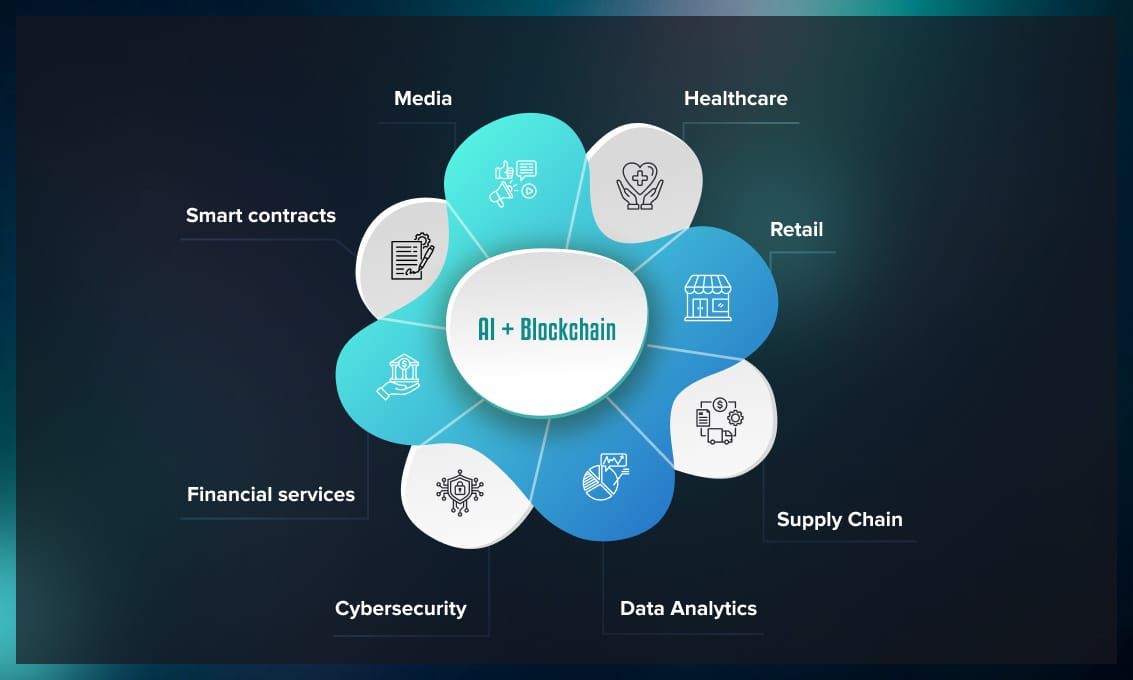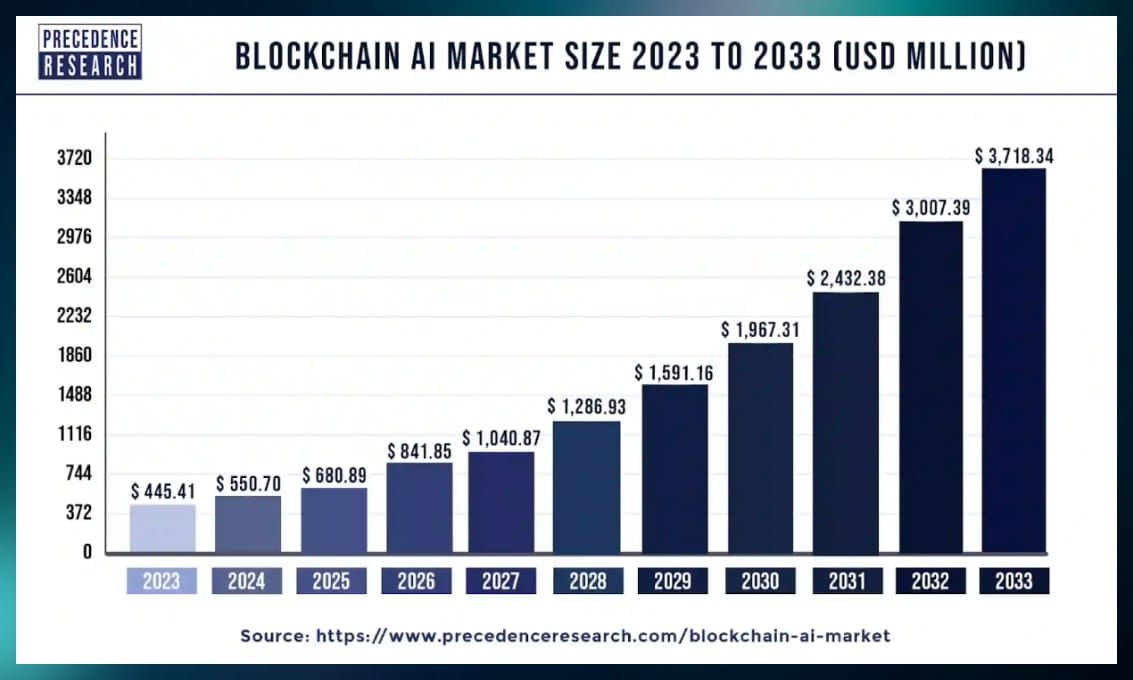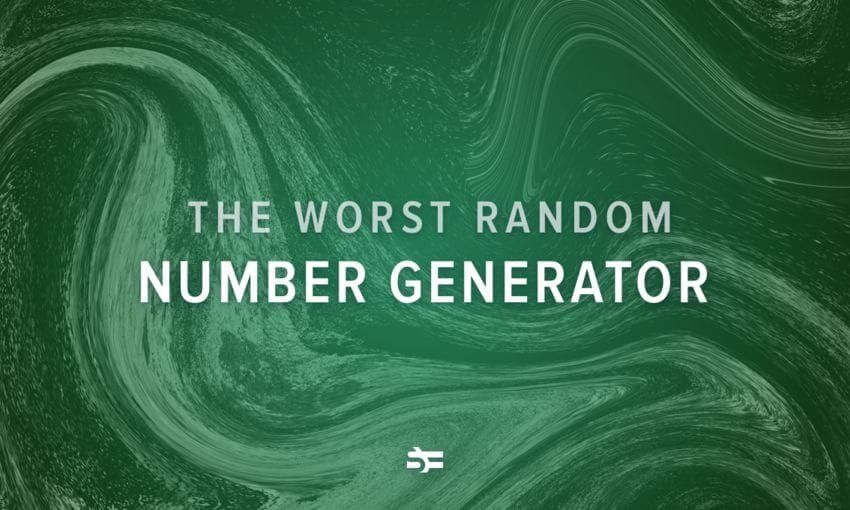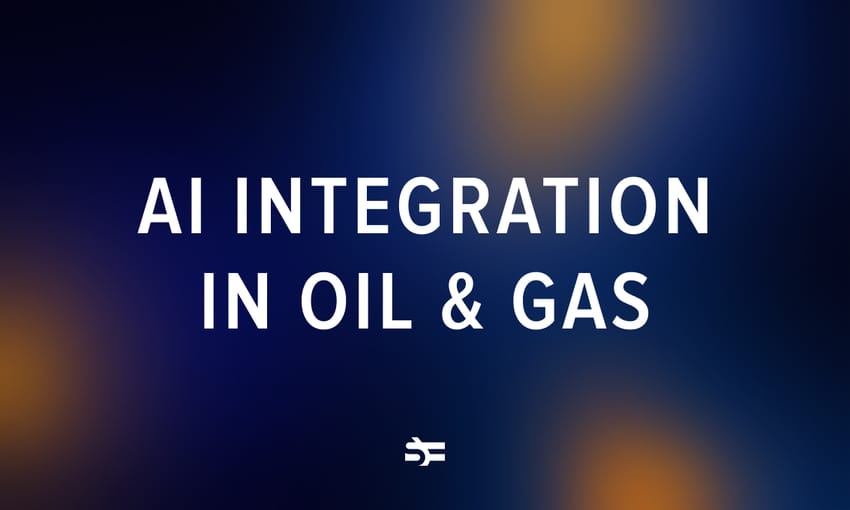Artificial intelligence and blockchain are two of the most transformative technologies of our time. When integrated, they open up a whole range of new possibilities underpinned by AI’s significant productivity enhancements and blockchain’s security and transparency.
In this post, we explore the integration of AI in blockchain and the benefits of merging the two.
How can blockchain improve AI?
The problem with artificial intelligence is that its decision-making process lacks transparency due to complicated multi-parameter calculations, and extensive data arrays. Advanced machine learning models, such as deep neural networks, often operate as black boxes. This issue, often referred to as “explainability,” raises concerns about trust and AI ethics.
Blockchain’s key features, such as immutable and transparent digital records and decentralized data storage, can offer valuable insights into the typically centralized and opaque nature of AI. By integrating blockchain, AI systems could benefit from enhanced trust, privacy, and accountability.
Here’s a closer look at how this could work:
Trust
Blockchain provides a tamper-proof ledger where each transaction is permanently recorded. This can be used to store and track every decision made by an AI system, along with the data it was based on. This immutable audit trail ensures that any changes or inputs are transparent and traceable. This approach allows scientists to analyze each step of the calculations involved in any ML algorithm, including tracing through the layers of deep neural networks, to better understand how conclusions are drawn.
With blockchain, all network participants have access to the same information, which can lead to increased transparency. This means that the operational and decision-making processes of AI systems can be accessible to all relevant stakeholders, which is crucial for developing trust.
Data security and integrity
Blockchain’s decentralized nodes can serve as cryptographically protected data storages for artificial intelligence algorithms. Direct, verified access to databases on the blockchain by AI models ensures that confidential information is neither disclosed nor altered, as it bypasses any intermediary handlers.
Computing power
AI is resource-intensive and requires substantial computational power. For the most complex tasks, we need to upgrade centralized data servers, and memory storage hardware. Blockchain can help by sustainably distributing the computing workload across multiple machines.
How can AI enhance blockchain?
While blockchain technology can enhance the interpretability of AI, artificial intelligence offers tools for identifying and analyzing connections within blockchain.
Moreover, AI algorithms can help detect fraudulent activity on blockchains. Below, we take a closer look at the benefits of integration AI in blockchain.
Better data management
AI can analyze patterns and optimize the hashing process, streamlining the data management process. By employing machine learning models, AI can predict the most likely successful hash combinations based on historical data and current network conditions.
Optimized energy consumption
In blockchain technology, data mining involves validating transactions and adding them to the blockchain ledger. This process is computationally intensive and requires significant energy.
ML algorithms can analyze and streamline these processes. By identifying inefficiencies and optimizing the operations, AI can reduce the amount of computational power required.
Improved scalability
AI addresses the blockchain scaling challenge by introducing advanced decentralized machine learning systems and innovative data-sharing techniques. This not only improves efficiency but also creates opportunities for startups and enterprises within the blockchain ecosystem.
Transaction efficiency
AI algorithms can optimize the way transactions are processed on the blockchain by predicting peak times and distributing the load more evenly, reducing bottlenecks and ensuring faster transactions. AI can also improve the efficiency of smart contract execution by predicting potential issues and optimizing contract code.
Augmented security
While blockchain is known for its strong security features, applications built with this technology are not totally immune to flaws. AI integration can provide additional automated testing and real-time data transformation capabilities to blockchain’s peer-to-peer linking. This combination allows blockchain developers to securely optimize processes.
Innovative data management
In the future, all data is expected to be stored on a blockchain. This means organizations will be able to purchase data directly from holders. Acting as a data gatekeeper, AI will ensure that the flow of blockchain data is streamlined.
AI and blockchain integration: areas of application

The integration of AI and blockchain can effectively address concerns about data security and workflow optimization. This combination allows for the seamless integration of research processes and results into immutable ledgers. Additionally, blockchain technology and smart contracts enhance data security and integrity for AI.
Below are some practical examples of blockchain and artificial intelligence conjunction.
Healthcare
Together, AI and blockchain can improve data management and privacy protection in healthcare by securely storing and sharing patient records and medical test data. Techniques like homomorphic encryption allow computations on this data without compromising privacy.
This facilitates collaboration among healthcare researchers across different locations while maintaining high data security standards.
Retail
Merging AI with blockchain enables retailers to save customer insights in immutable blocks, record entire processes, and analyze factors contributing to the success or failure of marketing plans. Additionally, it enhances the payment process and reduces the risk of fraud.
Supply chain
The integration of two technologies can improve transparency, reduce fraud, and enable real-time tracking of goods from production to end users. AI models can use predetermined conditions within smart contracts to automate tasks, such as detecting inventory needs and placing orders with suppliers.
Data analytics
Blockchain technology excels in providing data provenance and ensuring long-term data integrity through its secure, decentralized networks, making it ideal for large-scale data analytics. As blockchain becomes integral to economic and social activities, sophisticated machine learning models can analyze on-chain data fast and securely.
Cybersecurity
Decentralized infrastructure and blockchain technology can serve as encryption-backed safeguards for AI systems, limiting misuse and adversarial behaviors.
Financial services
Large language models can utilize the on-chain financial stack of the Web3 industry to perform routine payment or economic exchange tasks. The composability of blockchain applications allows AI models to handle complex financial transactions without intermediaries.
AI-driven automated investment strategies in DeFi can create new financial services supported by secure, transparent, and decentralized infrastructure.
Government
The merging of blockchain and AI can help transfer control over data from centralized entities to the public while maintaining data security and quality. These technologies will help trace e-voting procedures, making them accessible to all citizens in real-time.
Smart contract development
In the future, smart contracts could be created using natural language and prompts, instead of programming languages, and then converted into code with the assistance of ML models. Validators would reach consensus on the correct output, which would be executed by the blockchain network. AI-powered APIs can also enhance smart contract applications with real-world analytics, sentiment analysis, and generative models, ushering in a new generation of Web3 applications.
Media
As deep learning models like DALL-E, Stable Diffusion, and Midjourney gain momentum, the risk of using them for generating misinformation and deep fakes increases. Blockchain’s cryptographic watermarking and tamper-proof timestamping can authenticate content and ensure it hasn’t been altered.
Additionally, non-fungible tokens (NFTs) can address challenges in verifying the authenticity and provenance of digital content. By assigning an NFT to a piece of content, creators can set a digital fingerprint, making the content’s origin, ownership history, and modifications transparent and verifiable.
Use cases for integrated AI and blockchain
Having explored the various use cases of blockchain and AI, let’s now examine the platforms that are already leveraging the combined power of these technologies.
SingularityNET
SingularityNET is the leading decentralized AI marketplace that utilizes blockchain. Its primary mission is to develop Artificial General Intelligence (AGI) and decentralize AI, promoting a fair distribution of power, value, and technology worldwide.
The SingularityNET marketplace allows users to search, trial, and choose from a continually expanding library of AI algorithms. The platform’s publishing infrastructure serves as a central hub for creating, editing, and managing AI solutions, providing organizations with the necessary tools to launch services globally.
NEAR protocol
Initially an AI-focused company founded by former Google and Microsoft engineers in 2017, NEAR pivoted to blockchain in 2018. NEAR is designed to address Ethereum’s limitations through novel sharding technology, Nightshade, enabling faster, more efficient transactions. It also focuses on user-friendly features and developer incentives. NEAR protocol is actively exploring the integration of AI into its ecosystem through decentralized AI training methods, allowing contributions from a blockchain-based community.
DeepBrain Chain
DeepBrain Chain is a blockchain-driven platform that provides a decentralized, high-performance GPU computing network. Their goal is to become the most widely used GPU computing infrastructure globally in the AI and Metaverse era.
DeepBrain Chain’s mission is to accelerate the advancement of artificial intelligence in an era that is undergoing an explosion of smart devices and their computational needs. Founded by AI veterans, DBC uses blockchain technology to develop a distributed, low-cost and privacy-protecting AI computing platform that aims to address the pain points of the industry back. —Source
Blackbird
Blackbird.AI combines AI and blockchain to analyze news and information’s provenance and authenticity. They have developed an AI-based Narrative Intelligence Platform called Constellation, which automatically detects, analyzes, and measures risks associated with harmful narratives created by misinformation.
Matrix
Matrix is a blockchain platform powered by AI that can be applied in multiple sectors. Some of the features it offers include:
- Creating personalized AI-powered digital avatars secured on blockchain.
- Building AI-driven blockchain applications with no-code tools.
- Decentralizing machine learning processes through blockchain (distributed ML).
- Enhancing brain-computer interfaces and cognitive computing capabilities in neuroscience research.
Conclusion
The potential for transforming various sectors through AI and blockchain is tremendous. According to Precedence Research, the global blockchain AI market size, valued at USD 445.41 million in 2023, rose to USD 550.70 million in 2024. It is projected to reach approximately USD 3,718.34 million by 2033.

As companies strive to automate tasks, boost productivity, and enhance their business offerings, AI models are expected to increasingly permeate various segments of the economy.
At the same time, as trust in institutions declines, users gravitate toward applications offering cryptographic guarantees. This convergence of AI and blockchain technology is poised to fundamentally reshape our life.



.jpg)
.jpg)



